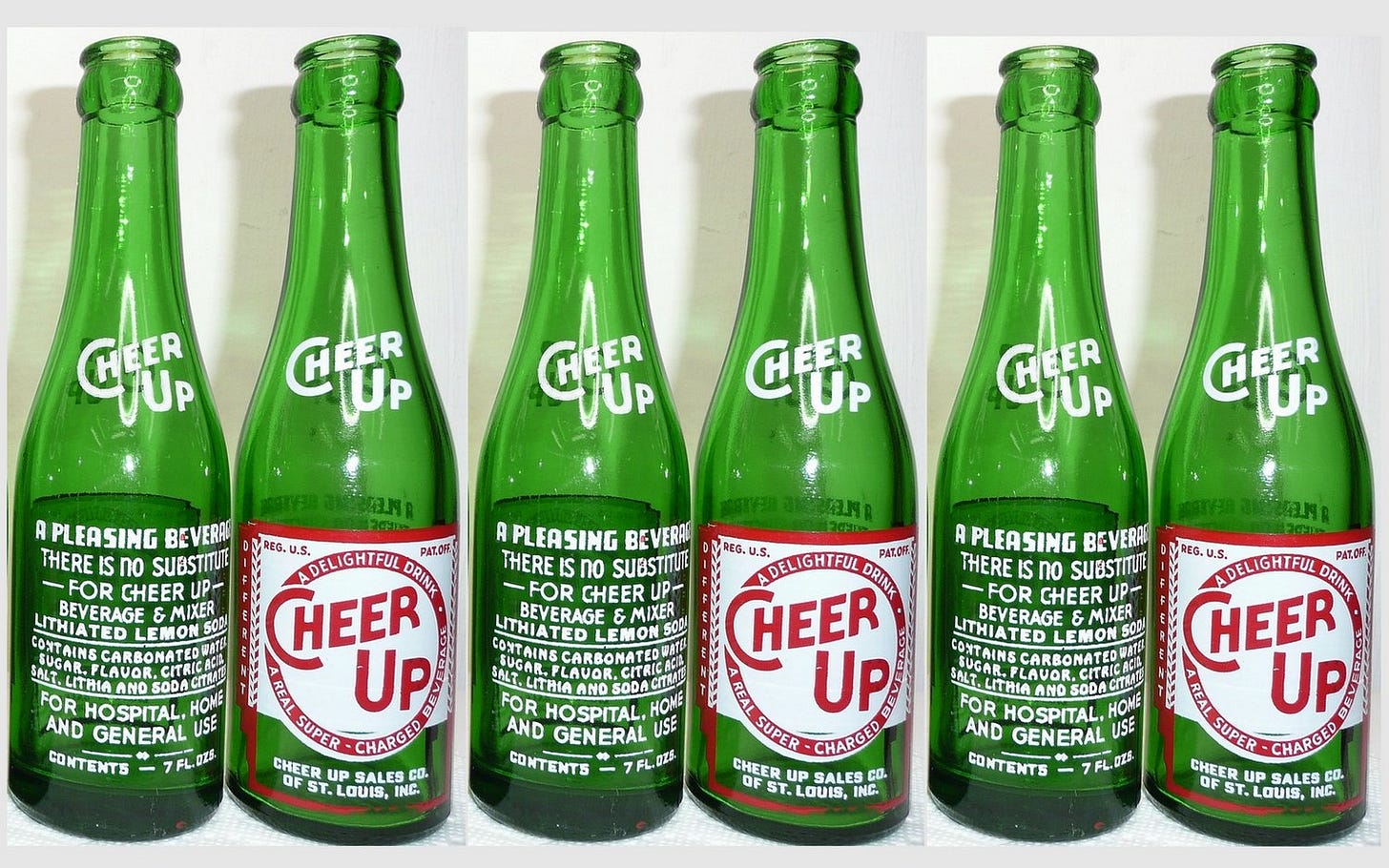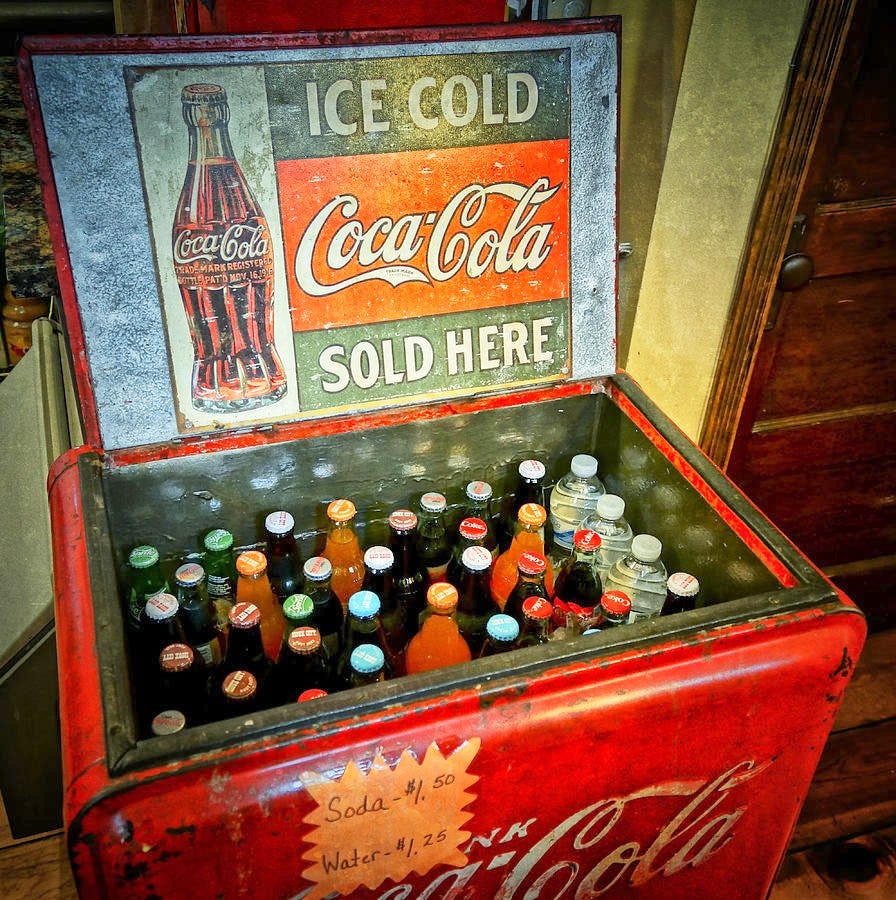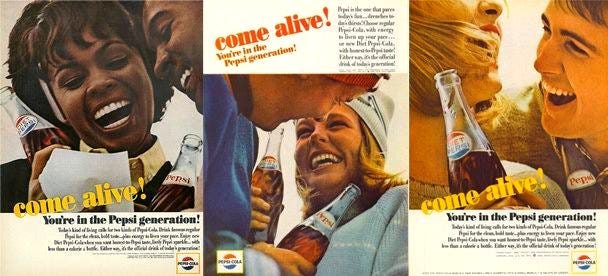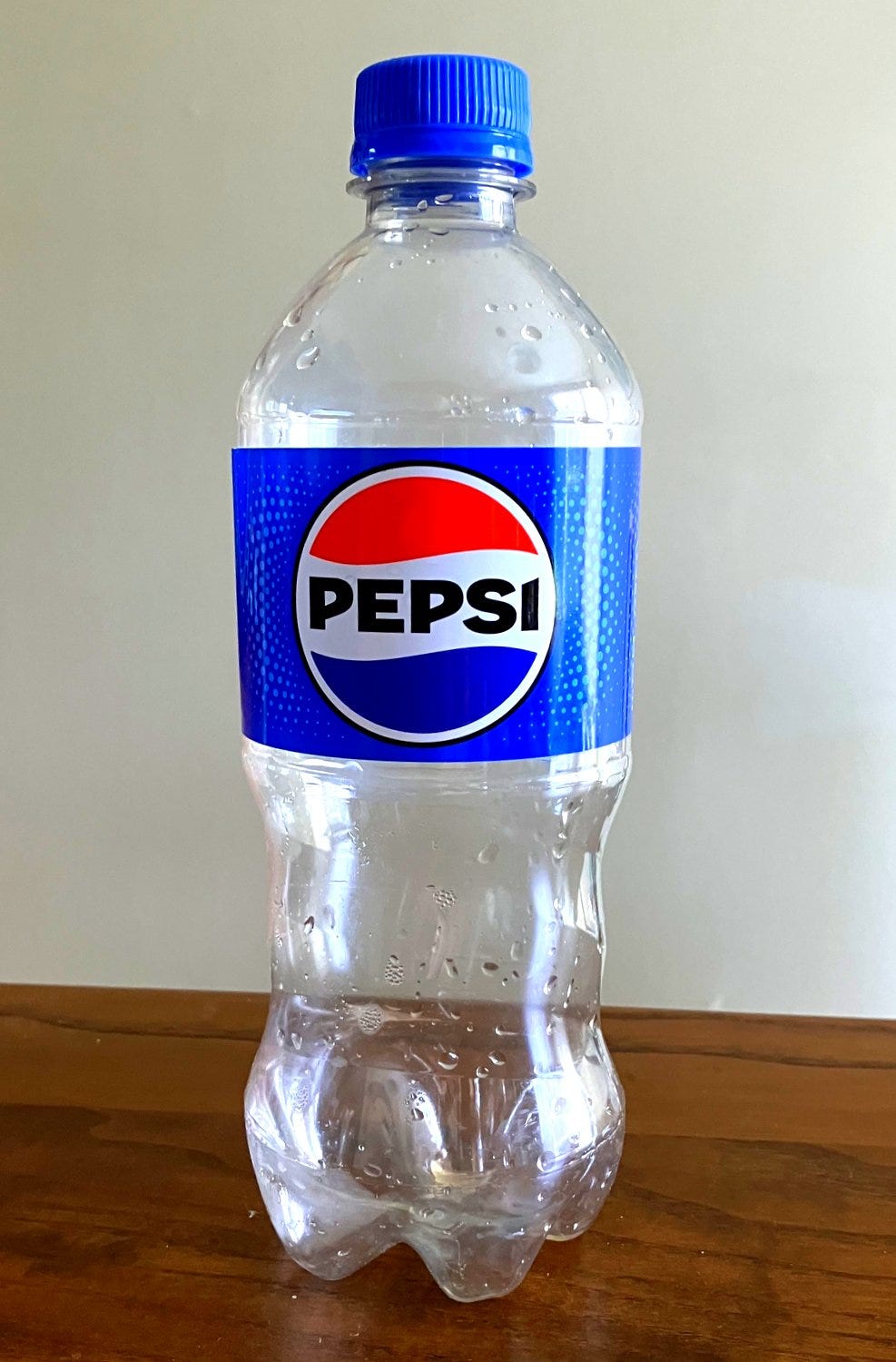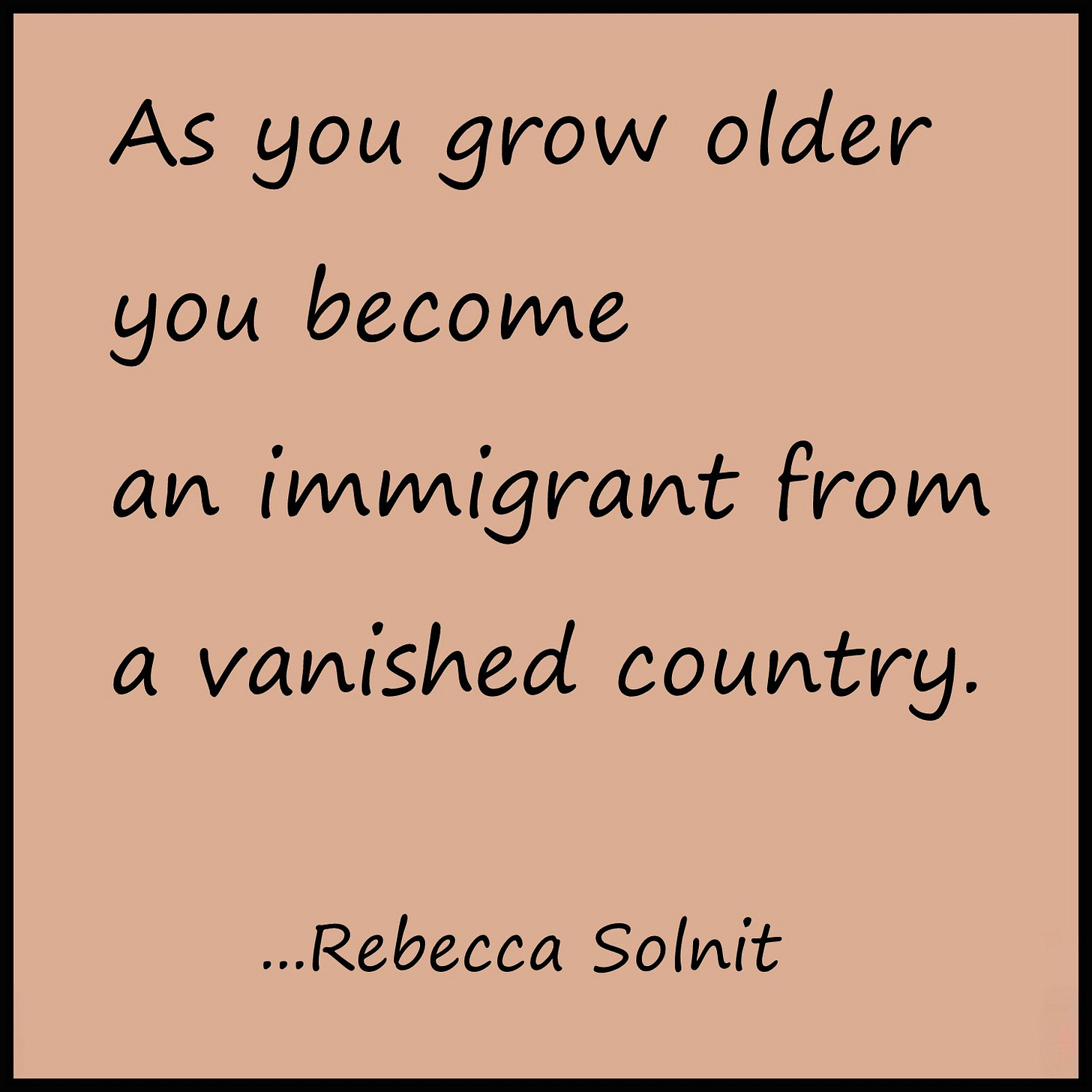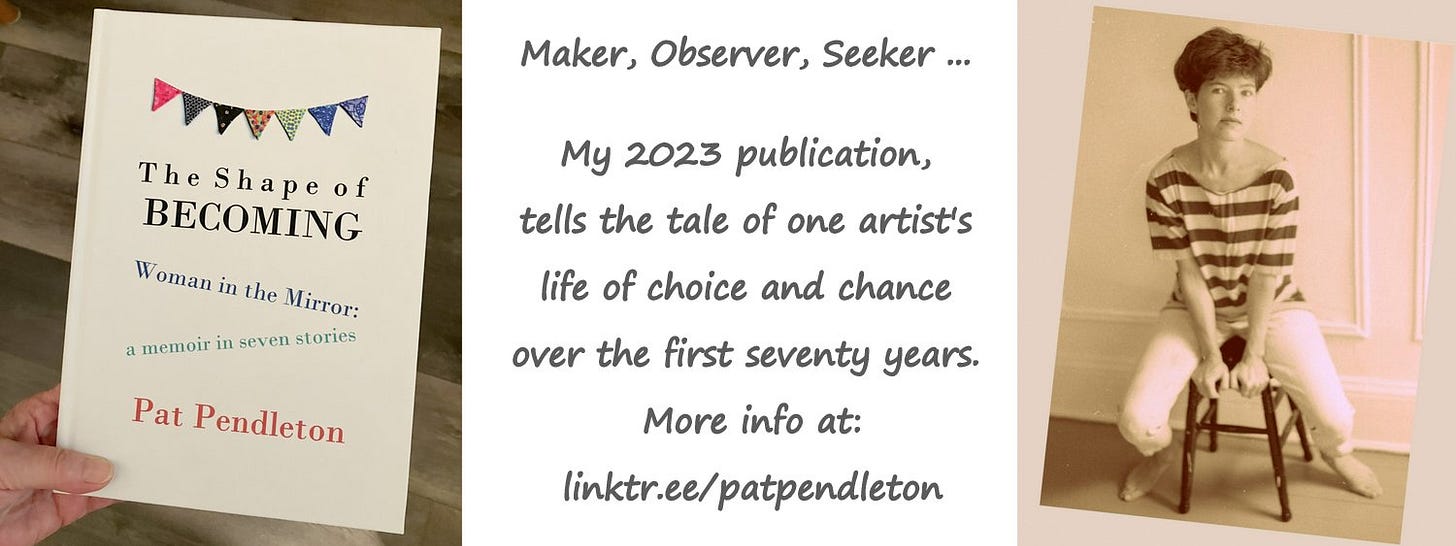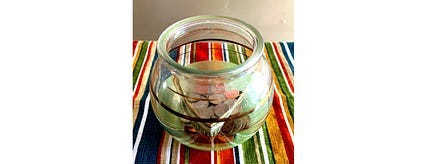Popular during the 1940s, a carbonated drink called CHEER UP appeared along with the dueling colas. It was called healthful, likely for that one ingredient, salt lithia, a natural mineral known to aid in the treatment of depression—more elixir than soft drink.
Soft drink? Soda? We called it pop in Western New York. A special-occasion drink during the years of forced milk drinking of childhood, there was nothing so enticing in the summer as a refrigerator case full of icy glass bottles to choose from—Squirt, 7Up, Fresca, Vernor’s Ginger Ale, A&W Root Beer, Orange Crush, and of course, the colas.
Those Pepsi tv commercials and magazine ads of 1963 were early version of lifestyle marketing and told me I was a member of The Pepsi Generation. It was our time to come alive. It seemed to be true. The Beatles and rock music was made for us. Mod and hippie fashion was made for us. While there was a sunny gloss painted on those years, it was also a time of a growing demand for civil rights and women’s rights. As young men were being drafted into military service, a war in Vietnam escalated along with anti-war protests. That just happened to be the world we were born into.
The two similar brands of dark sugary energy-boosting drink popularized in the early twentieth century during the world wars gathered their devoted tribes. One brand was often consumed at room temperature in the in the classic green glass bottle. The other was branded to appeal to a youthful offspring born during the post WWII late 1940s through early 1960s. The slogan Baby Boom Generation was coined the same year as the Pepsi generation campaign. This painting reflects the mood of the time.
The other evening, the person I live with arrived home carrying a bag dripping with the stuff. After quickly eating a not so good slice of pizza and a sip of the cola that came with it, the cap was placed back on the plastic bottle (threaded slightly off-kilter) and tossed into a bag along with a sweater, notebook, and other miscellaneous papers. The leaking Pepsi left a trail of drips along the kitchen and hallway floor.
I emptied the remains of the bottle into the sink. “You don’t drink soda,” except for an occasional Canada Dry Gingerale as a cocktail mixer or upset stomach remedy.
The spillage and soaked items were cleaned up, but I noticed a sticky residue under my bare feet the next morning, a reminder that despite the peacefulness of my home environment, the unrest in the world at large feels sticky—tainted with meanness, lies, and corruption.
That country of the Pepsi generation has vanished, but the drink remains. The cost may be rising due to the ten percent tariff that is now attached to exporting the specially concocted concentrate from manufacturing in Ireland.
The brand message, Come alive, later became Live for now. More recently, it has evolved to That’s what I like.
The youth that came alive during the 1960s are the age of grandparents now, the last to arrive at middle age during the pre-digital analog era—a time to wander, get lost, and discover.
That’s what I like—owning that experience.
and … I could really use a cold sip of that CHEER UP!
~~~~~~
Copyright Pat Pendleton 2025. All rights reserved.
This is a reader-supported publication. Thank you for taking the time to read it! Free subscriptions are available to receive new posts and support my work. Paid subscriptions are appreciated, but optional.





